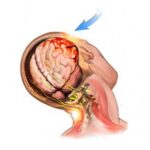The tips contained in this 2 minute read will help give insight into how injured people can obtain fair and full recoveries in their injury claims.
Because an injured person is usually entitled to only one settlement (or recovery), it is imperative that the insurance compensation be maximized. When I, as a personal injury lawyer, have negotiated a recovery that includes all past, present, and future damages, I have earned a fair and full settlement for my client. This is my primary responsibility in zealously representing someone who has been injured.
To expand upon my responsibilities to my injured client, it goes without saying that a fair and full insurance settlement MUST cover all medical expenses, loss of income, and other financial losses. However, the area where legal representation makes a big difference is recovering the ‘non-economic’ damages the injured person has suffered.
Non-economic damages have traditionally been referred to as ‘pain & suffering’ damages.
When I handle an injury claim negotiation, it might surprise you to learn that I do not use the term Apain & suffering@ when proving up non-economic damages. I do this for two primary reasons. First of all, ‘pain & suffering’ is very vague and often does not, in my view, represent credible proof of damages. Second, because ‘pain & suffering’ is difficult to prove, many insurance companies and defense attorneys discount it when it comes down to serious negotiations.
Instead, I maximize an injured person=s non-economic proof of damages by showing his or her loss of health and loss of quality of life.
Proof of loss of health is best shown through the medical evidence and the physical restrictions that an injured person has suffered because of the injury. When a doctor reports on an injured person’s past, present, and continuing physical restrictions, there is plenty of justification for a much higher claim settlement. This is especially true when it is shown that the physical restrictions are directly impacting the injured person=s work, family, and personal responsibilities.
Everyday I deal with claim adjusters and I know it is difficult for them to understand ‘pain & suffering’. Largely, this is because it is based on the injured persons’ subjective complaints. It is quite another thing when that same adjuster is evaluating medical evidence of physical restrictions and the effect those restrictions have on an injured person=s ability to get along in his or her daily routine.
Proving loss of health is just one aspect of how I maximize settlements in personal injury cases. Another important aspect of presenting the best possible non-economic damage evidence is showing that an injured person has suffered a loss of quality of life. I will discuss that next time and make sure it is posted to social media.





